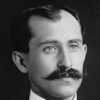Orville Wright

Orville Wright
The Wright brothers, Orvilleand Wilbur, were two American brothers, inventors, and aviation pioneers who are generally credited with inventing, building, and flying the world's first successful airplane. They made the first controlled, sustained flight of a powered, heavier-than-air aircraft on December 17, 1903, four miles south of Kitty Hawk, North Carolina. In 1904–05 the brothers developed their flying machine into the first practical fixed-wing aircraft. Although not the first to build and fly experimental aircraft, the Wright brothers were the...
NationalityAmerican
ProfessionInventor
Date of Birth19 August 1871
CityDayton, OH
CountryUnited States of America
Before leaving camp in 1902 we were already at work on the general design of a new machine which we proposed to propel with a motor.
Before leaving for our camp at Kitty Hawk we tested the chain drive for the propellers in our shop at Dayton, and found it satisfactory.
We were lucky enough to grow up in an environment where there was always much encouragement to children to pursue intellectual interests; to investigate what ever aroused curiosity.
We decided to place the motor to one side of the man, so that in case of a plunge head first, the motor could not fall upon him.
With all the knowledge and skill acquired in thousands of flights in the last ten years, I would hardly think today of making my first flight on a strange machine in a twenty-seven mile wind, even if I knew that the machine had already been flown and was safe.
We estimated that we could make one of four cylinders with 4 inch bore and 4 inch stroke, weighing not over two hundred pounds, including all accessories.
The airplane stays up because it doesn't have the time to fall.
Isn't it astonishing that all these secrets have been preserved for so many years just so we could discover them!
If we all worked on the assumption that what is accepted as true is really true, there would be little hope of advance.
We left Dayton, September 23, and arrived at our camp at Kill Devil Hill on Friday, the 25th.
No data on air propellers was available, but we had always understood that it was not a difficult matter to secure an efficiency of 50% with marine propellers.
One of the Life Saving men snapped the camera for us, taking a picture just as the machine had reached the end of the track and had risen to a height of about two feet.
We laid the track on a smooth stretch of ground about one hundred feet north of the new building.
We were then satisfied that, with proper lubrication and better adjustments, a little more power could be expected. The completion of the motor according to drawing was, therefore, proceeded with at once.